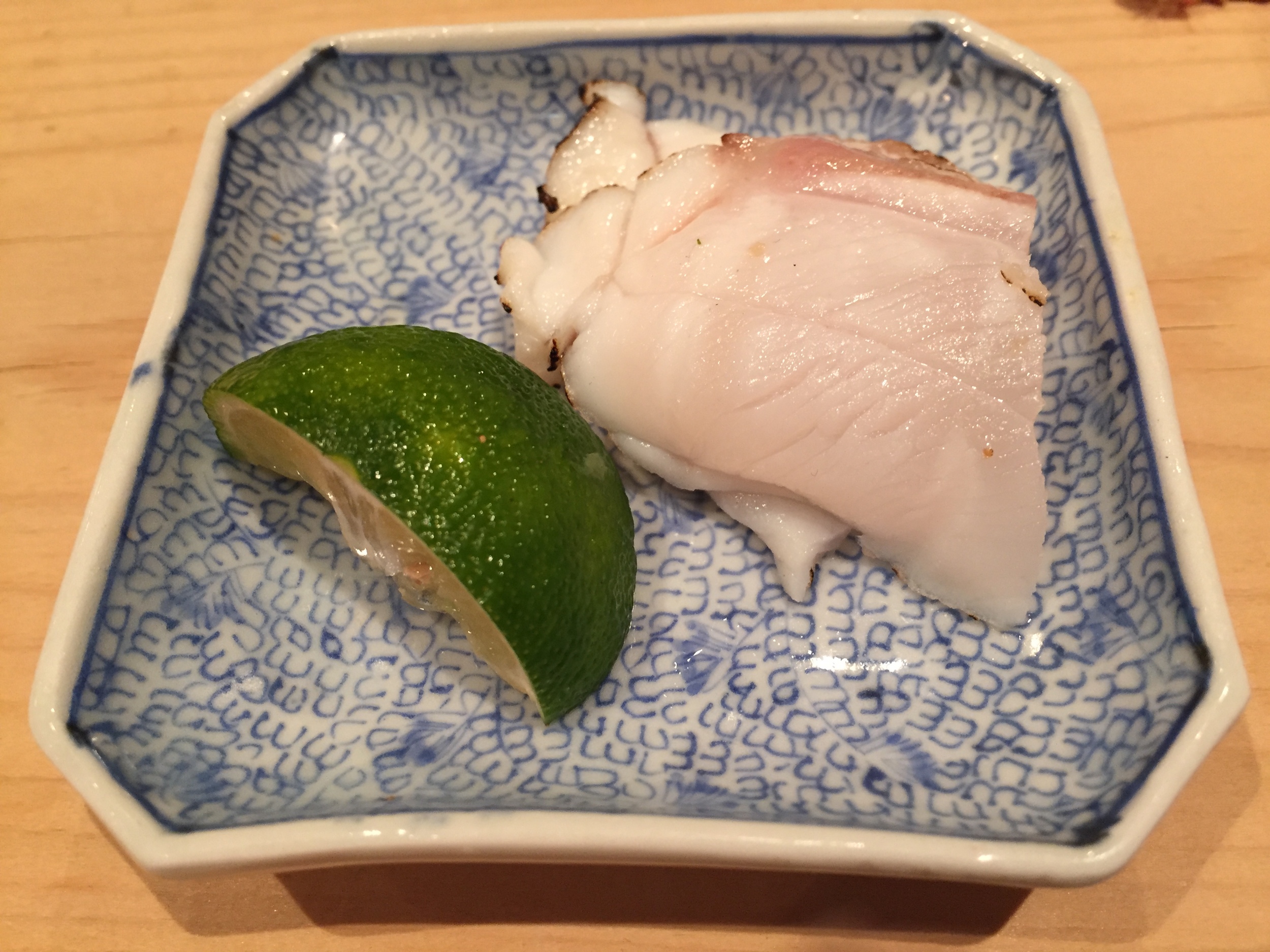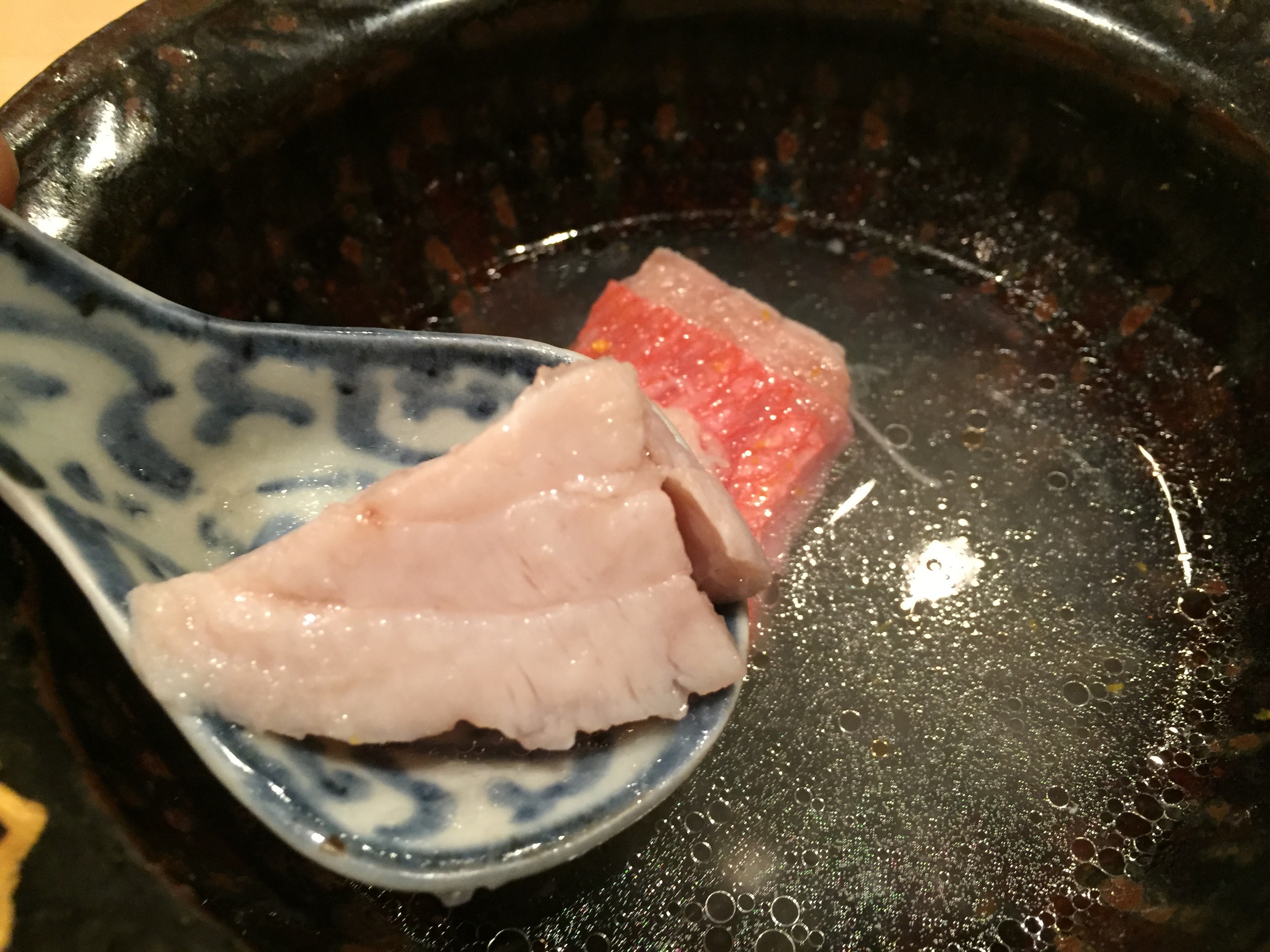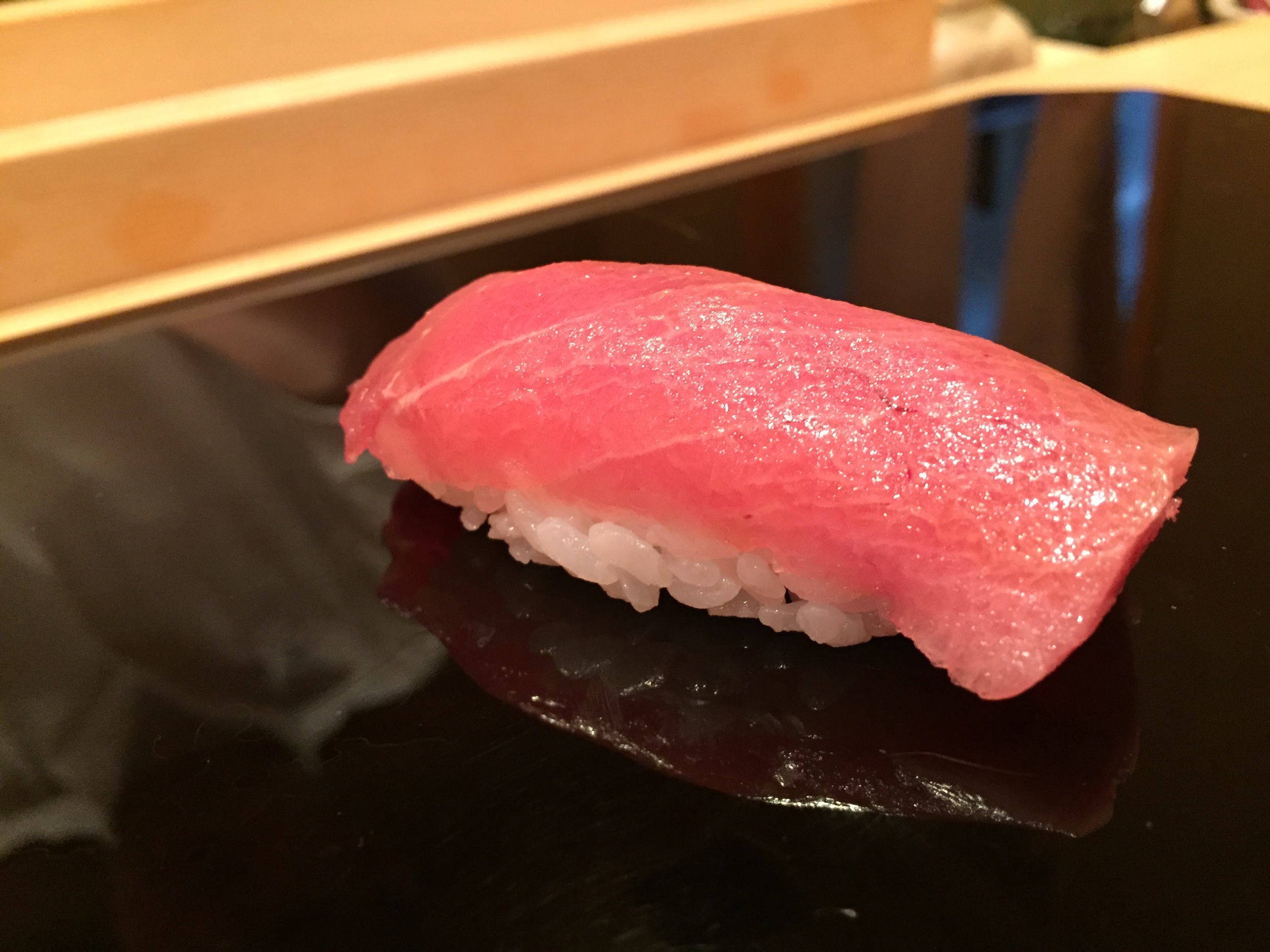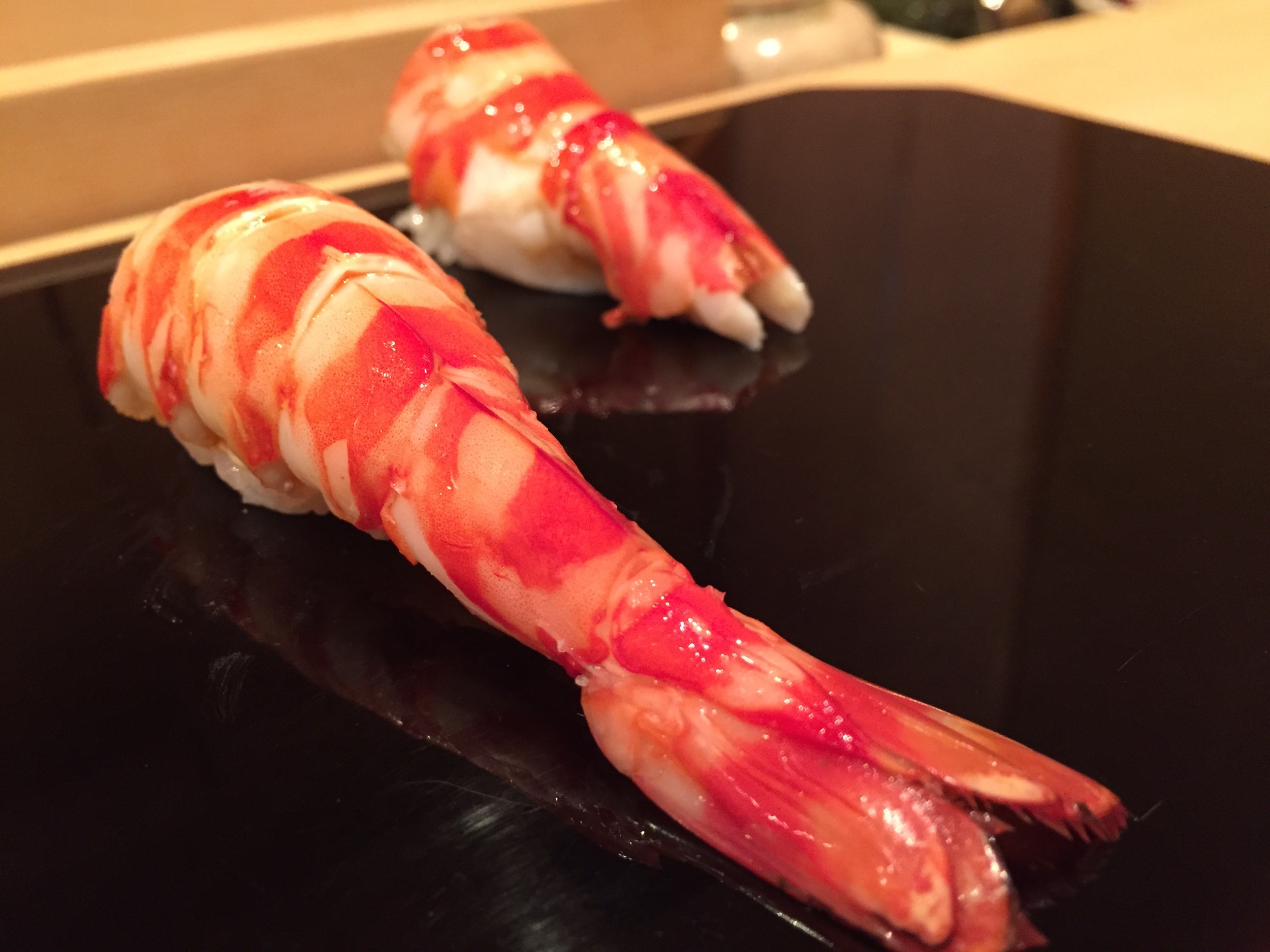- Cost: 30,000 JPY/person and up, before drinks
- Size: 10 seats at counter, plus two booths
- Style: tsumami + sushi omakase
- Reserved: 8 weeks in advance
The list of Jiro Ono's disciples with their own notable shops is long and growing. There is is of course, his son's offshoot shop, Mizutani (the most senior), Masuda (the new hot commodity), and even Nakazawa-san in the US. But arguably, Harutaka is the shop where Jiro's style is replicated most faithfully, yet in a more relaxed setting. Now that Mizutani-san has closed his shop, Harutaka Takahashi bears the distinction of being the longest-tenured Jiro student with his own sushiya.
Harutaka is unique in a few different ways. Firstly, it is open late into the evening on most nights, oftentimes doing 3 turns at the counter. For this reason, it is a favorite shop of local chefs to stop (Saetome-san, Tokyo's "Jiro of tempura", is supposedly a regular at both Harutaka and Jiro). Secondly, perhaps as a result of this policy, bookings are not quite as difficult as those unattainable sushi reservations in Japan that have now become all but impossible due to the hype of the internet and a steady stream of regulars. Notwithstanding that fact, the ingredient quality, precision and technique level at this sushiya is certainly amongst the highest echelon, even when compared against the most highly-regarded shops in Tokyo.
Unlike Jiro's sushiya (or Mizutani, for that matter), tsumami plays an important role in the meal. The tsumami on my visit was absolutely mind-blowing, including a fugu-overload of nikogori (jellied skin), sashimi and torafugu shirako (tiger blowfish milt) - the latter being perhaps the most expensive and hyperseasonal delicacy that can be found at a sushiya. Unbelievably, this was only second to an incredibly rich slice of kinmedai that was cooked almost "nabe" style (kinmedai nabe being a popular non-sushi preparation) in a light dashi that was absolutely exploding with rich fish oil flavor.
The sushi itself was one of my favorite styles - fairly strong use of white vinegar on glossy shari that retained excellent, distinctive texture. Compared to Sawada, for example, I found the seasoning to be equally sour yet not quite as "sharp" or overpowering. As with Masuda, Harutaka even uses the same plates for sushi as Sukiyabashi Jiro. Sushi were on the larger side (at least for the "modern style" found typically in Ginza) and excellently balanced. Neta was of the highest quality - tuna from Aomori in late winter, "giant" and juicy kuruma ebi, and Aomori murasaki uni of a somewhat "secret" origin (it had been clearly removed from its box either for presentation purposes, or to obscure the brand) that is perhaps the best I have ever tasted. Even "off season" (i.e. not peak fattiness) neta like aji were excellent. The most skill-intensive items that are iconic of the "Jiro" style - kohada, engawa, hamaguri nitsume, and yes, that kasutera-style tamagoyaki, were all truly excellent.
I have read some posts that complain about consistency in recent visits to Harutaka - perhaps due to the number of turns at the counter, or the shop's recent relocation in mid-2016 (I visited before that time), but I had no such issues. In fact, I found Harutaka-san's assistant, Kurita-san, almost equally impressive; it was clear he is trusted with some significant responsibility as he sliced all of the neta for the customers on the night I visted, save for the maguro. Harutaka is certainly the type of place I could return to again and again, if I was a local customer. I can think of no higher praise for a sushiya.































